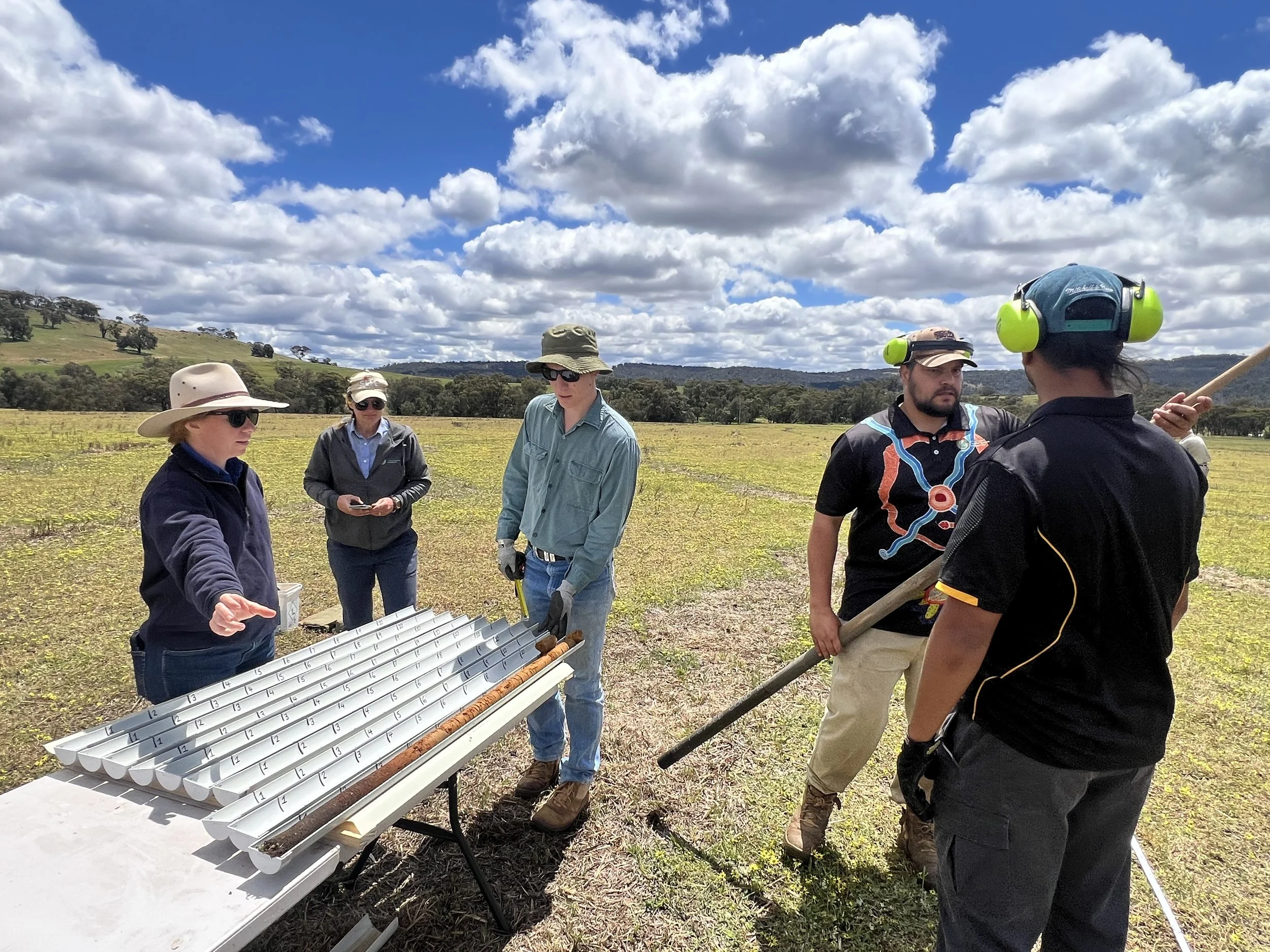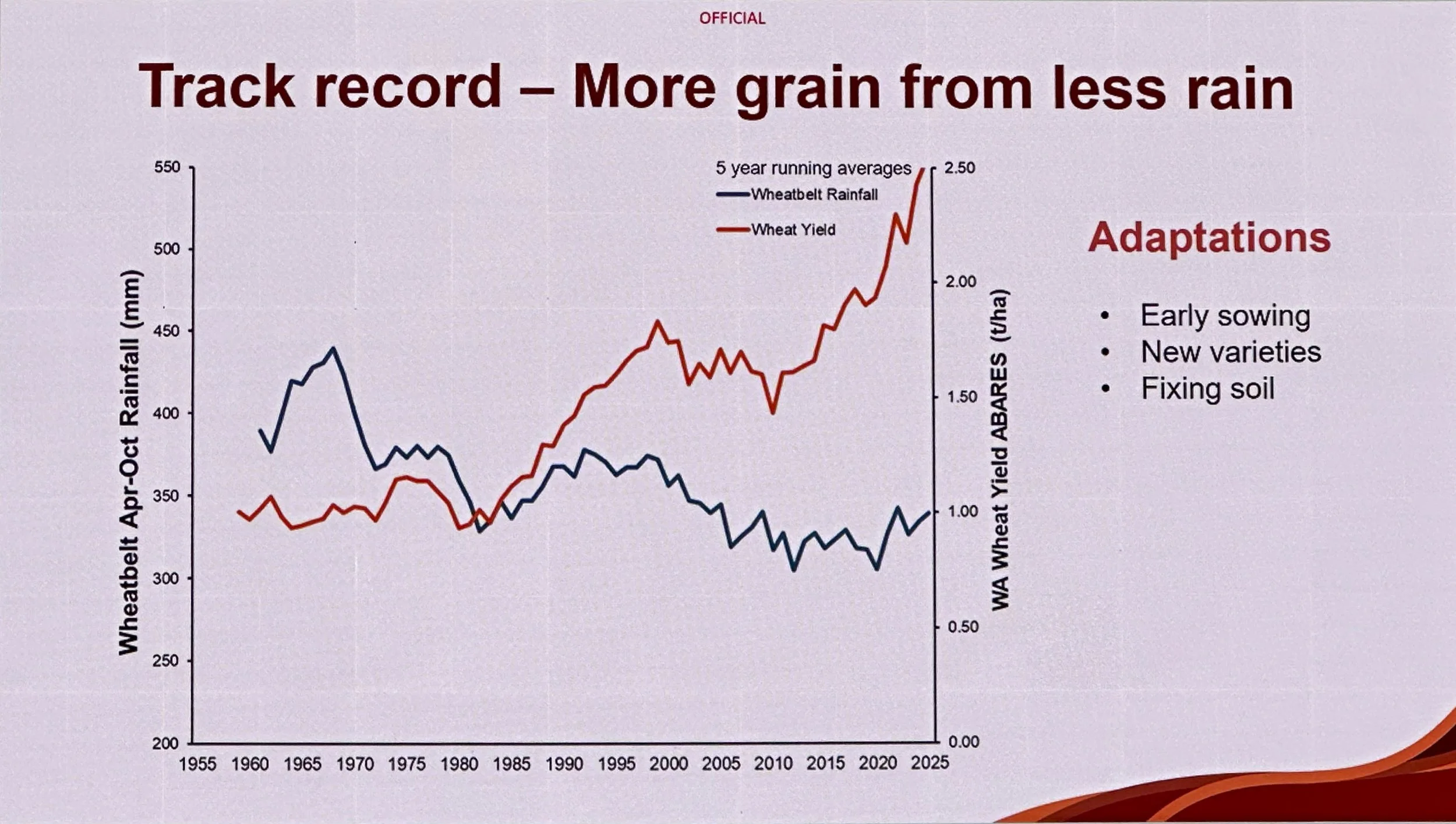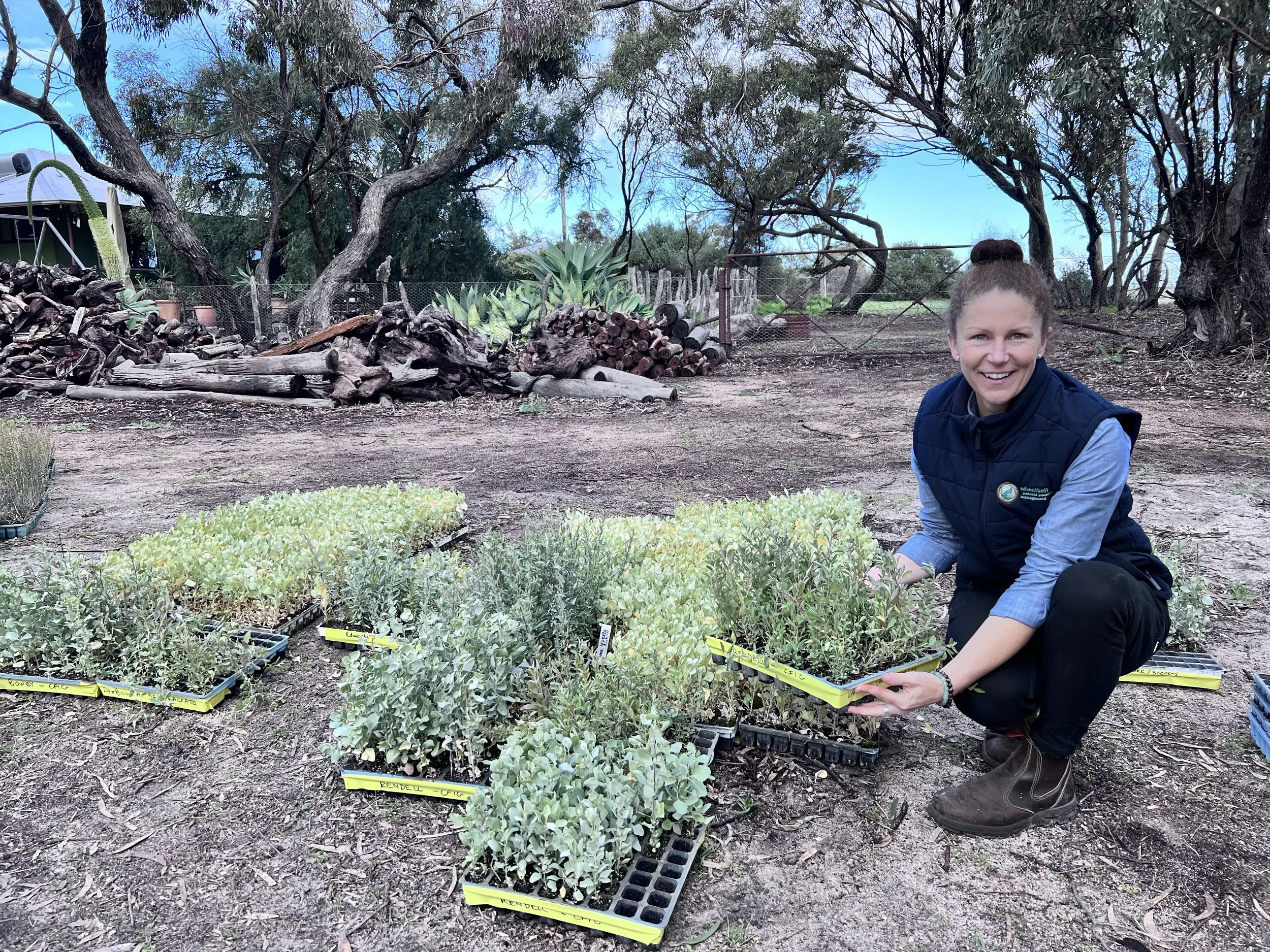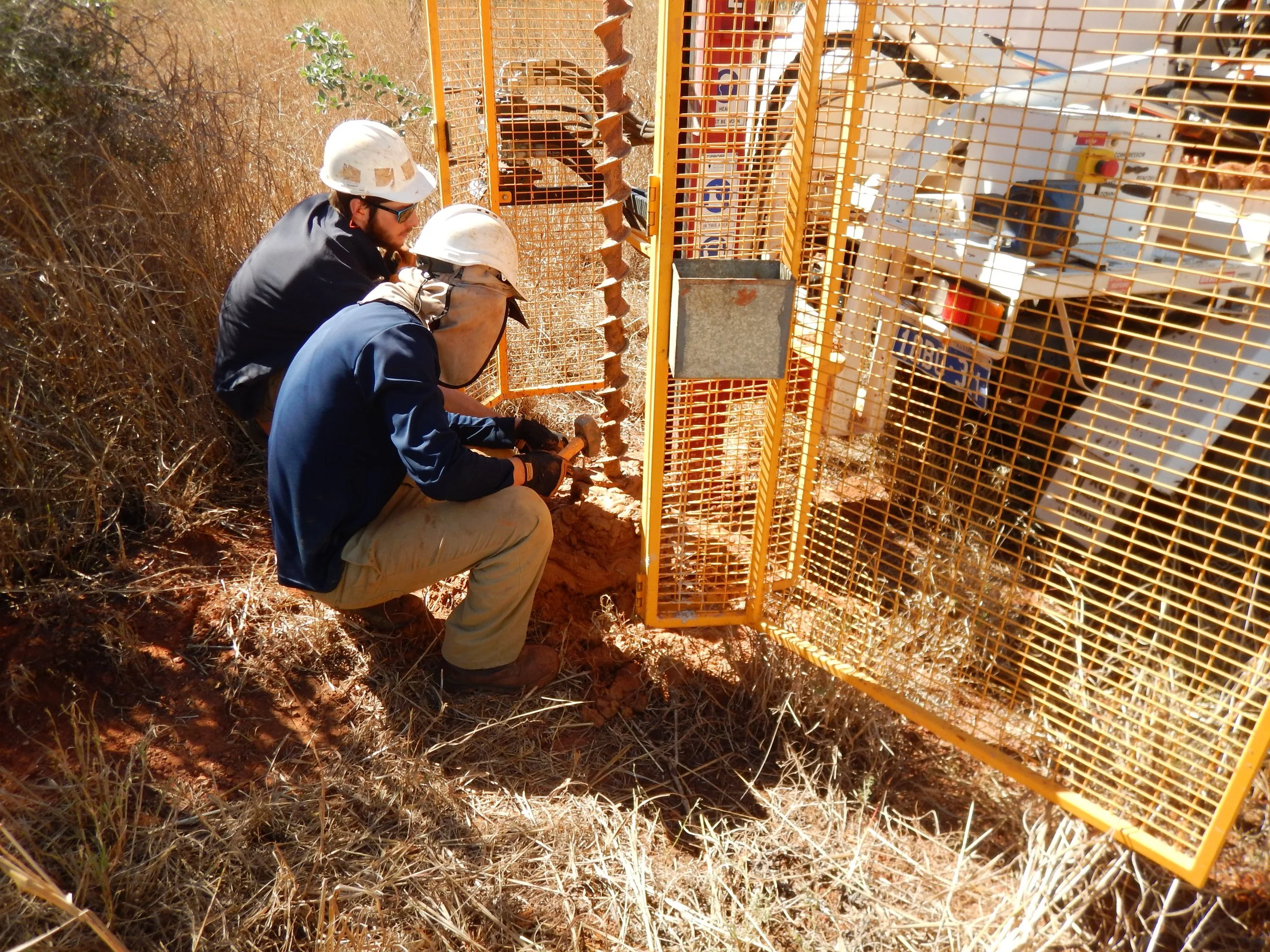
News
We’d Like to Thank the Academy
Wheatbelt Natural Resource Management (WNRM) has recently been honoured with the "Excellence In: For Purpose" award at the prestigious Avon Valley Business Awards 2025.
Geared Up, Well-Trained, and Coming for Your Soils
The NSMP is rolling out in south-west WA and Wheatbelt NRM are geared up, trained and ready to sample your soils as part the first Australia-wide soil monitoring program.
9th National NRM Knowledge Conference 2025
Over four jam-packed days, delegates from across the country explored a wide range of topics, from the impact of artificial intelligence (AI) on future workplaces, to the implementation of the National Soil Monitoring Program, the impact of Corellas on the WA Wheatbelt, carbon management, and monitoring natural diversity, and much more. With so many engaging sessions on offer, choosing which to attend was no easy task!
Tracking Habitat Health: Baseline Surveys Underway Across the Wheatbelt
Over the past two months, the Healthy Environments team has been busy out in the field, carrying out 20 baseline habitat condition surveys across 8 properties owned by landholders partnered in new conservation projects with Wheatbelt NRM.
Recap: Climate Adaptation Conference 2025
Experts confirmed we’ve surpassed the 1.5°C global warming limit, with 2024 the hottest year on record. However, with cooperation and innovation, the Wheatbelt community can continue to thrive through smart climate adaptation.
Your Black-Cockatoo Sighting Could Save a Species
Black Cockatoos only raise 1 chick per year – your sightings help protect critical habitat in the WA Wheatbelt. Click on Read More to report a sighting!
Why Wheatbelt Shires are culling Corellas
Over the next few months, the Shires of Victoria Plains, Goomalling, Toodyay, Northam and York will be carrying out Corella management. Photo by Andrew Kavanagh
You’re Invited: 2025 AGM
Join us on 22 October for the Wheatbelt NRM at 9:30! Connect, share stories, and help shape what comes next for our environment and communities.
Feral pigs breed like rabbits
Help monitor feral pig activity in the Avon Arc to identify the extent of the feral pig issue and gain support and funding for the strategic management of the pest.
Welcome to the team Surya!
Surya is our new Soil Field Officer and will be helping carry out soil testing as part of the National Soils Monitoring Program.
Help shape the future of our region
Help shape the future of the Wheatbelt and go in the draw to win a remote sensing camera, local produce hamper, or $100 nursery voucher!
Carbon Workshop recap: Empowering farmers for a sustainable future
Project Manager Alex Johnson, attended a No-Nonsense Carbon Farming workshop in Merredin last month.
Landholders from across the region gathered for the practical workshop focused on managing carbon on farm. No sales pitch, just solid, industry-led information to help Wheatbelt farmers reduce emissions, boost productivity, and navigate the changing carbon landscape.
Staff Feature – September 2025: Aimee Mouritz
This month we’re thrilled to feature Aimee Mouritz, a passionate and driven member of the Wheatbelt NRM team who has been making a big impact since joining in July 2023.
Aimee first came on board as a Project Delivery Officer, and more recently stepped into the role of Sustainable Agriculture Facilitator.
Red Card for Rabbits and Foxes seeks naming rights sponsor
Red Card for Rabbits and Foxes is calling for a passionate, community-minded sponsor to join us as a naming rights partner for the next four years.
This is a unique opportunity to align your brand with one of WA’s most recognised and impactful feral animal control programs, with high visibility and positive engagement across the south-west land division, from Geraldton to Esperance.
Airborne eDNA reveals hidden wildlife in the Wheatbelt
Wheatbelt NRM, alongside citizen scientists, used cutting-edge air-sampling eDNA devices to uncover hidden wildlife across five local towns.
From threatened species to feral pests, the results reveal both the richness – and the risks – in our fragmented landscapes. This innovative project shows that even the smallest woodlands matter!
Want to be part of our project? Join now to win an eDNA survey for your property, read more for details.
National Soil Monitoring Program underway in the South West
The National Soil Monitoring Program (NSMP) has officially started in the south west of WA.
Natural Resource Management officers from across the region will be reaching out to landholders to secure sites to be part of the national soil monitoring network.
Carbon for Farmers Voucher Program
Access up to $15.000 to kick start your carbon farming project through the Carbon for Farmers Voucher Program through the Department of Primary Industries and Regional Development.
Staff Feature: Karen Carter
Our staff feature for the month of August is Karen Carter, having joined the team at Wheatbelt NRM in 2023, Karen has been able to combine her love of conservation and the natural environment with inspiring others to have a positive impact through simple actions as a project delivery officer for the Healthy Environments team.
We’re on the Hunt for a new Red Card Naming Rights Sponsor
Do you want to get behind environmental conservation and support regional men’s health at the same time?
Red Card for Rabbits and Foxes is searching for a sponsor and it could be you. The sponsor will have exclusive naming rights of all Red Card activities which has attracted nearly 10,000 participants over recent years.
Cutting Through the Noise on Farming and Emissions
Want to hear about carbon farming without the sales pitch?
The Carbon Outreach Program gives producers and advisors exactly that: straight-talking, industry-led advice to help farmers understand where carbon fits on their farm, and what to do about it.




















